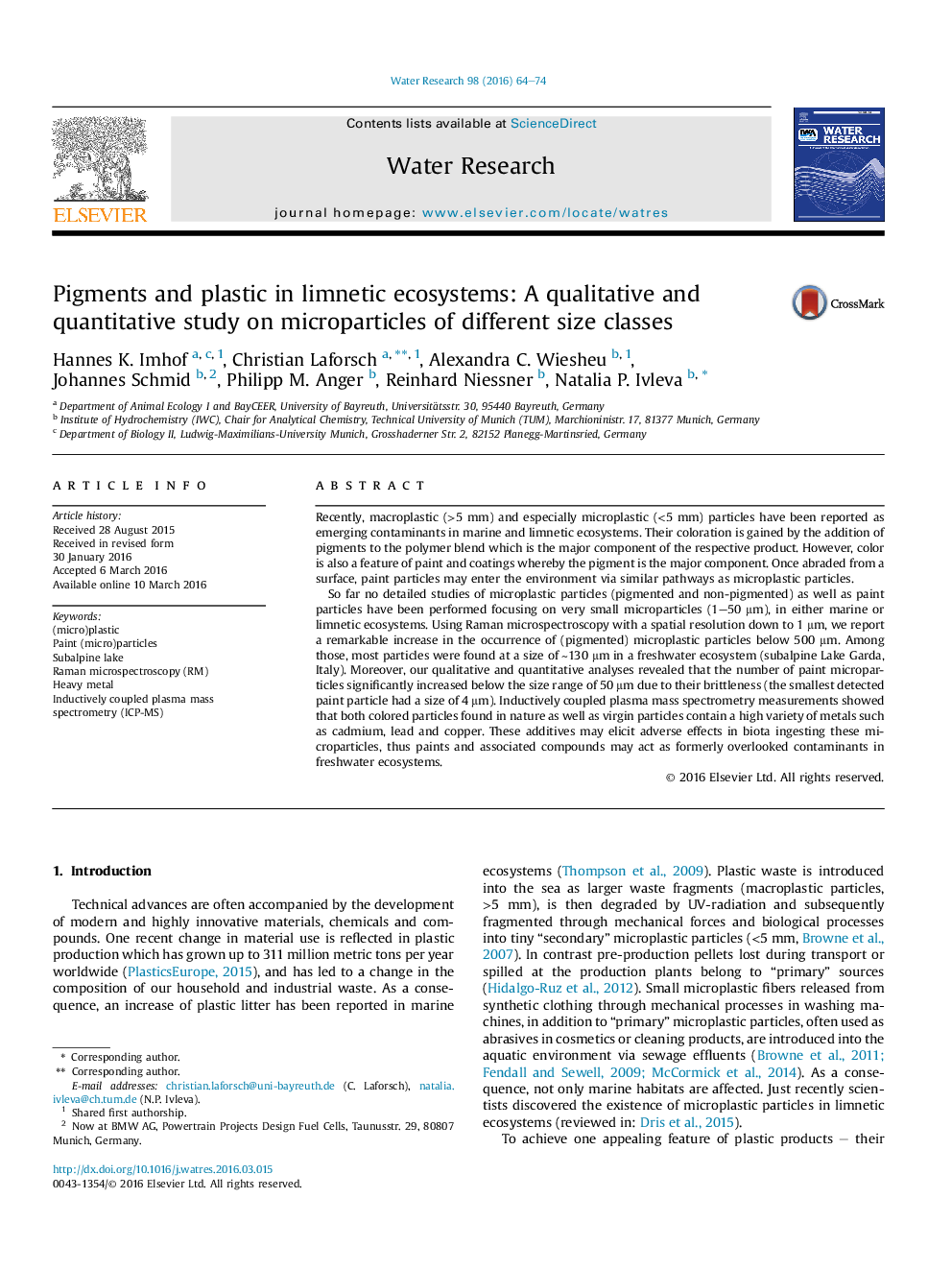| Article ID | Journal | Published Year | Pages | File Type |
|---|---|---|---|---|
| 4480971 | Water Research | 2016 | 11 Pages |
•First evidence of paint particles in a freshwater ecosystem.•Quantitative & qualitative analyses of microparticles including the size class 1 µm–50 μm.•Most paint particles belong to the size class 1 µm–50 μm whereas plastic particles were larger.•Paint and pigmented plastic particles could be transporting toxic elements into lakes and streams.
Recently, macroplastic (>5 mm) and especially microplastic (<5 mm) particles have been reported as emerging contaminants in marine and limnetic ecosystems. Their coloration is gained by the addition of pigments to the polymer blend which is the major component of the respective product. However, color is also a feature of paint and coatings whereby the pigment is the major component. Once abraded from a surface, paint particles may enter the environment via similar pathways as microplastic particles.So far no detailed studies of microplastic particles (pigmented and non-pigmented) as well as paint particles have been performed focusing on very small microparticles (1–50 μm), in either marine or limnetic ecosystems. Using Raman microspectroscopy with a spatial resolution down to 1 μm, we report a remarkable increase in the occurrence of (pigmented) microplastic particles below 500 μm. Among those, most particles were found at a size of ∼130 μm in a freshwater ecosystem (subalpine Lake Garda, Italy). Moreover, our qualitative and quantitative analyses revealed that the number of paint microparticles significantly increased below the size range of 50 μm due to their brittleness (the smallest detected paint particle had a size of 4 μm). Inductively coupled plasma mass spectrometry measurements showed that both colored particles found in nature as well as virgin particles contain a high variety of metals such as cadmium, lead and copper. These additives may elicit adverse effects in biota ingesting these microparticles, thus paints and associated compounds may act as formerly overlooked contaminants in freshwater ecosystems.
Graphical abstractFigure optionsDownload full-size imageDownload high-quality image (353 K)Download as PowerPoint slide
